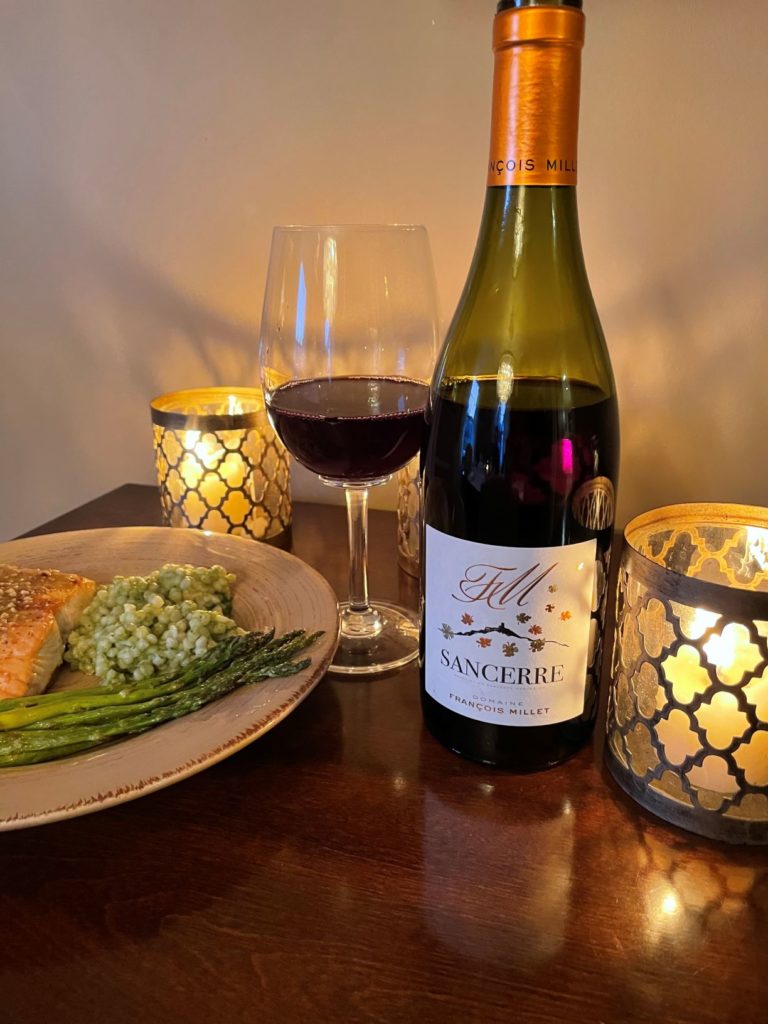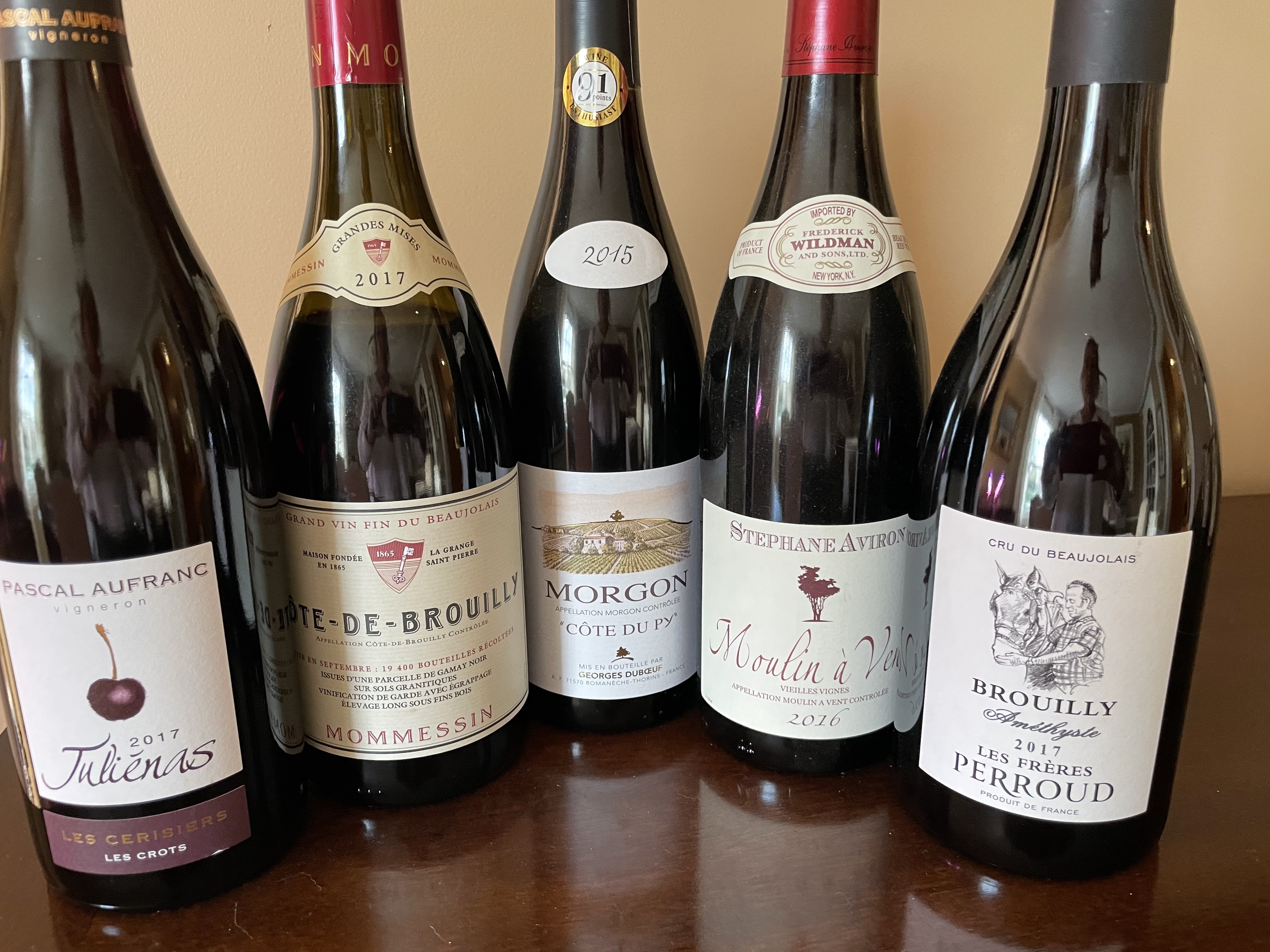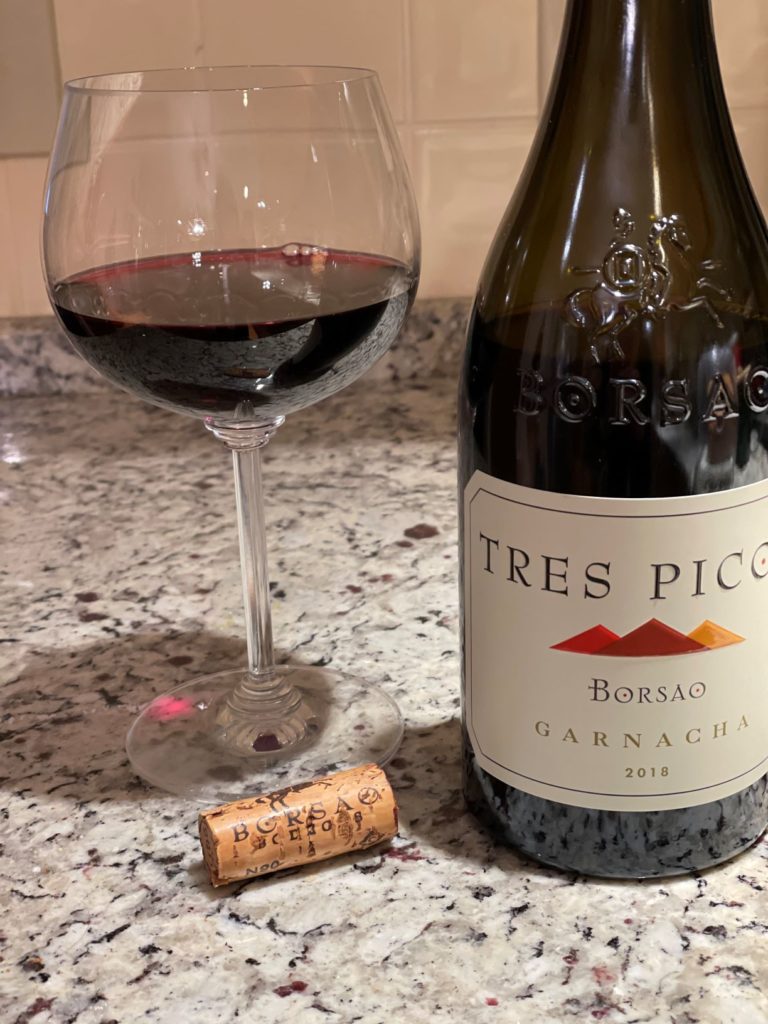Salmon has to be one of my favorite kinds of fish – I eat it about once a week, and I never serve white wine. Yes, you may have always heard that white wine goes best with fish, but that is not always the case. You can’t really make a generalization about fish and wine pairings, as there are many combinations. Sometimes red wine tastes amazing with fish, and ultimately it is what YOU like that creates the right pairing.
Salmon is a dark-fleshed fish that has an abundance of Omega-3 fatty acids that makes it have a heartier flavor and texture than a white fish like flounder. In food and wine pairings, it is important to create balance between the food and the wine. A lot will depend of how you cook the fish and what spices or sauce you are preparing with it. In general, the flavors of the dish should balance against the flavors, structure and acidity of the wine to complement both aspects of your meal.
I encourage you to try red wine with fish – it’s ok to break the rule of only white with seafood. Enjoying wine is all about what tastes good to you. And do not limit it to salmon…grilled swordfish with a nice spice rub or grouper with a mango salsa pair well with reds, as do shrimp dishes, especially with tomatoes in the recipe. I would recommend sticking with lighter to medium bodied wines. A Cabernet Sauvignon or a Malbec would be a it too heavy. Here are three reds to try:
Pinot Noir:
A more substantial, bold fish like salmon can pair well with a lighter red wine like Pinot Noir, which has soft tannins and ripe red fruits. For wines from the US, any Pinot Noir from Willamette Valley, Oregon or the North Coast, Sonoma, Carneros or Santa Barbara regions of California are great choices.

For something different, try a Pinot Noir from Chile, which has a similar cool, Pacific Ocean influence to California and a good choice of sustainable wines.
To be classic, look for a Burgundy from France. If your budget allows, try excellent wines from locations such as Aloxe-Corton, Morey-Saint-Denis, Givrey-Chambertin or Pommard, although any red Burgundy, even just a regional wine, is always enjoyable to me!
Another one of my favorites is Pinot Noir from the Loire Valley of France. Because of the way French wines are labeled, look for the appellation of Sancerre, but make sure it says Rouge (red). Sancerre is also a region producing a lovely Sauvignon Blanc (which you can very easily serve with fish for those who would like a white wine!)
Beaujolais:
Beaujolais is the French wine region just south of Burgundy and the main grape grown is Gamay. Depending on how old the wine is and where it is grown you have a wide variety of flavor profiles. Beaujolais Nouveau, which is a wine that is young and released just after the harvest, is very light, low in tannins and can have a really fun flavor profile of banana, kirsch and bubblegum from being made through a process called carbonic maceration (more on that in another blog!).

Beaujolais Village wines are grown at lower elevations on more fertile soils and have a similar lightness and low tannins to Pinot Noir, but the flavors are a bit fruitier and earthier. Try a wine from Julienas, Morgon, Fleurie, St. Amour or the other Cru AOCs that are grown on granite and have great structure, more intense red berry flavors and higher tannins.
Grenache/Garnacha:
Called Grenache is France and around the world, Garnacha in Spain – this varietal is one of my favorites. Still medium bodied but it has a bit more tannins and spice than Pinot Noir, so this is a good choice if you are grilling with a rub or using bolder spices. Think of raspberries and black pepper notes, with a lovely nose of wild herbs.
The south of France has many choices, and you can find an inexpensive Vin de Pays from Languedoc that will pair well (I have found that Trader Joe’s often has some great ones at reasonable “weekday wine” prices). Also, Spain has some tremendous Garnacha wines – one of my favorites is Borsao Tres Picos, a wine grown at high elevations on clay and limestone soils. You’ll find more spice to these wines, but I think you will like the pairing.




